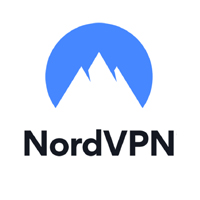Top 6 Best Tech Investments for Remote Working Professionals

Revounts Staff
Published On: December 1, 2023

Setting up a virtual workplace for remote workers is much cheaper and easier than an office space. But it still brings new challenges. You need to invest in new tools for communication, file management, and cybersecurity, amongst other concerns. Even adding things like VPN costs onto your lower overheads will keep you saving big time. That’s why more businesses are becoming ‘remote-first’.
Here’s what to consider when investing in tech for remote working professionals.
1. Communication Management Tools
Remote work has been a gold rush for communication programs. That’s why there are plenty of different communication management tools on the market today. It is great for the consumer because now you have a wide selection of affordable features and relevant integrations. Let’s run through the current frontrunners.
▸Zoom
Zoom is the most accessible video call app, making it perfect for setting up meetings with clients and contractors. It also comes with the added benefit of handling large numbers of participants. That is why Zoom is the top pick for big webinars, meetings, and conferences.
The downside of Zoom is that it isn’t suited to a day-to-day workflow and hasn’t got the integrations that other apps boast.
▸Microsoft Teams
The big draw of Microsoft Teams is its integrations. It can add meetings to your Outlook calendar and create new Word documents in-app. Besides, Teams has more text chat options than Zoom and is best suited to large companies.
▸Google Chat
If your company uses products like Gmail, Google Docs, or Google Sheets, Teams will be wrong for you. For those using the Google Suite, Google Chat is the right communication tool for you. This Google-integrated app is best suited to small to medium-sized teams or companies.
As the free version of Google Chat is limited, Slack is the preferable alternative for small teams – even those that use Google products. But, if you are willing to pay for it, the platform’s Gmail integration can be quite easy and pleasant to use.
▸Slack
If Zoom is the biggest video call app, then Slack is the biggest text chat app for businesses – it even integrates with Zoom. Its UI is super simple, and its onboarding tells you all you need to know. For most online businesses, this is the choice– even large companies with hundreds of employees opt for this. But again, its lack of integrations can be frustrating if meetings are being held often.
2. File Management Tools
The sharing and switching of files is the pumping blood of a business. In the office, this was cabinets and servers, but in the remote workplace, it means using the cloud. Like communication programs, a collection of cloud storage apps have popped up recently, and here are the major ones:
▸Microsoft OneDrive
OneDrive is the most used file-sharing service for big business and boasts the best functionality and support. Like Microsoft Teams, OneDrive is especially useful for Microsoft Office users. This is because it integrates seamlessly with Microsoft programs. It also allows you to view files in the app without downloading them and has added AI organisation to help show you the files you’re looking for.
▸Google Drive
If your team is not using Microsoft products but Google ones, then Google Drive is the clear pick. It has few frills, but it interacts well with its programs and will simplify your workflow. But if you’re not using Google programs, there are a few reasons to choose it over its competition.
And with Google Workspace plans starting as low as $5, investing in this remote-friendly software can help your business save over the 2024 financial year.
▸Dropbox
Dropbox was one of the first cloud storage companies with boots on the ground. As a result, this file-sharing app has found a respectable market share with small to mid-sized businesses. Its main focus is group sharing, and it comes with Smart Sync and Remote Wipe features.
Once again, the downside of Dropbox is the lack of specific integrations. Despite this, Dropbox does integrate with Zoom and Slack.
▸Box
The Box is lesser known but has its place in the market. Its special draws are:
- Unlimited storage in all business places.
- A built-in content management system.
- Far more integrations than Dropbox– such as Zapier, Salesforce, and Asana.
- And E-signatures.
Small companies that rely on E-signatures or require workflow automation should consider Box.
3. Security Tools
Security tools are much more varied than communication and file management tools. Remote-access tools, VPNs, password managers, privacy screens, and anti-viruses are included in this category. You can use the NordVPN coupon code to avail of discounts at NordVPN, it is the most used VPN.
The need for these tools will vary significantly by company. After all, if you're dealing with personal data, you’ll need a few more locks and keys. If you’re unsure which programs to employ, do further research. You can find more information about small business cybersecurity at the ACSC website.
4. Signature Management Tools
An e-signature is simply your name typed or drawn onto a digital document. This holds some water in court, but not much, so e-signature tools have been designed for higher security. These tools generate a digital fingerprint for each signature for a higher level of security and one that will hold up in court. The current forerunners are DocuSign, PandaDoc, and SignNow.
5. Project Management Tools
Management tools typically combine sticky notes, calendars, checklists, and over-the-shoulder comments. They’re used to lay out your work and your deadlines, organise teams for projects, and then file it all away in organised folders. These programs can be integrated into your communication and document tools, so make sure to choose the one that suits your programs. Asana, Trello, Microsoft Projects, and Notion are the biggest project management tools.
6. Time Management Tools
If you want to monitor your team’s workflow and usage, you can employ tracking software to monitor and moderate their day. For example, if they open YouTube during work hours, they’ll get sent a warning to return to work. Or if you need to know what the hours they’re putting in are, it’ll collate that, too. The major programs for this sort of management are Timecamp, Toggle, and Hubstaff.
Conclusion
As you can see, the best tech investments for remote workers are very different from the best tech tools for retail businesses. They’re more streamlined and geared towards combating all the difficulties of remote work.
And as your remote team works with these programs, they’ll better understand which benefits your company most. This will include evaluating program features and pitfalls.
Thankfully, these software providers are continuously updating their products. As time goes on, remote professionals can expect new features and better UIs from these tech investments.
*Disclosure: When you buy something using the retail links in our stores, reviews, or blogs, We may earn a small affiliate commission at no additional cost for you. We recommend brands and products that we genuinely like and are only promoted through coupon codes, promo codes, discounts & editorial reviews on Revounts. Learn more about our terms & conditions.
